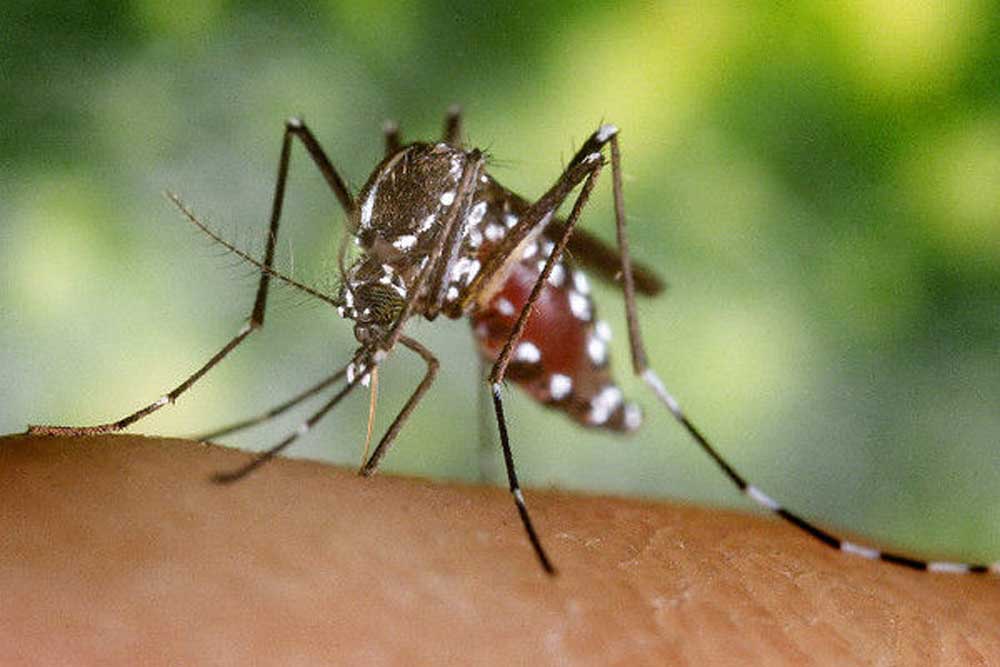Insects are a big problem
Published 5:29 pm Wednesday, June 29, 2016

- CDC/COURTESY Mosquito bits can be a pain and a source of diseases,. There are a number of options for reducing the chances of being bit by mosquitoes, ticks and chiggers when outdoors.
This is the summer of the mosquito. In East Texas they come in droves. In Central Texas they are the size of airliners.
Either way, they make an evening outdoors about as exciting as standing over a bed of rattlesnakes or copperheads, another issue people are dealing with more than normal in Texas this year.
Trending
And if mosquitoes and snakes weren’t bad enough, there are also chiggers and ticks out the wazoo.
Oh, and did I mention the Zika virus scare. There is that too. And West Nile virus. And Lyme disease.
But there is not a need to lock yourself indoors until winter. There are options for protections, some living better chemically and some using great-grandmother-approved natural remedies.
The question is where to start, and the answer kind of depends on what you are going to do. Those spending a late evening fishing or sitting out on the porch need a different layer of protection than those going for a hike or just playing in the dirt.
However, all three are going to start with a layer of protection against mosquitos. There are a lot of over-the-counter options, some work better than others.
“DEET, picaridin, and lemon oil of eucalyptus are the top rated, registered active ingredients for repellents, according to the CDC and Consumer Reports,” said Dr. Mike Marchant, Texas A&M professor and Texas AgriLife Extension Urban Entomologist in Dallas. “Of these DEET is still king as far as longevity goes, but they all work well.”
Trending
There are about 200 varieties of mosquitos in the U.S. Fortunately, the proven repellents will treat any and all.
Through the years manufacturers have entered into an escalating war in how much DEET they can put in a can or container. Marchant says more is better, but only to a certain level.
“Higher concentrated repellents products work better, up to a point. DEET at around 30 percent gives maximum-length protection. You don’t get substantially longer protection going over that concentration,” he explained.
There are other options beyond sprays for those fishing or just relaxing. Some have been proven over time and some are newer high-tech options that are gaining a following.
“I have not seen any studies on the Thermacell repellent lanterns, but my guess is that they are about as good as any tiki torch, clip-on repellent with fan or citronella candle. If the wind’s blowing the plume away, or you aren’t completely surrounded by the smoke or chemical plumes, mosquitoes will still find you. The best repellents are the ones you put on your skin and clothing,” Marchant said.
For ticks and chiggers, hunters and hikers have for years depended on permethrin products as a repellent. The advantage is that they are long-lasting. They can be effective for weeks even with clothing that has been washed. The disadvantage is that it can only be applied to clothing. It should never be sprayed on the skin.
“Permethrin-treated clothing for ticks and chiggers will also help with mosquitoes, though most loose-fitted, tightly-woven fabrics will prevent most mosquitoes from biting,” Marchant explained.
Anyone who ever went to summer camp or grew up in an area where chiggers are really bad is also familiar with a chigger bag, a sock or some other cloth bag filled with sulfur.
“Sulfur is a repellent to chiggers, as is DEET. The best way to keep these tiniest pests away is a combination of one of these repellents and tucking pants’ legs into socks. Not very stylish, but fellow hunters and fishermen will know what you’re about, and the wildlife won’t laugh. By tucking the pants into the socks you deny ticks and chiggers easy entrance to your legs and waist- the juiciest parts of our anatomy,” Marchant said.
Sulfur or a Permethrin concentrate spray can also be spread or sprayed in a yard to offer weeks of protection from chiggers and ticks.
While all these precautions are useful, there is still concern about Zika.
While widely publicized and certainly a concern, like everything else there is more that needs to be taken into consideration
“Women of childbearing age, who are pregnant or could become pregnant, should not freak out about Zika unless they are traveling to an area where Zika is being actively transmitted by mosquitoes. This includes Mexico to Brazil, the Caribbean, and parts of the South Pacific. Pregnant women are advised not to travel in these area,” Marchant explained.
“For Texans staying at home this summer, the risk is very low. We have yet to see a locally transmitted case in the U.S., but health officials predict it will happen. The risk of picking up Zika here though is less than the risk from West Nile virus. If you’re pregnant and want to be outdoors, it’s just a really good idea to wear repellent. The CDC considers all the registered repellents safe for pregnant women.”
Want to know more about bugs that bite, Texas AgriLife Extension service has a number of publications and videos with additional information.
They include: http://citybugs.tamu.edu/files/2016/06/ENTO-052-What-Texans-Need-to-Know-about-Zika.pdf; http://citybugs.tamu.edu/files/2016/06/Ento-053-Zika-Precautions-for-Women.pdf; http://mosquitosafari.tamu.edu/ (an interactive site to tour a mosquito-infested backyard); and http://www.youtube.com/playlist?list=PL601F08778CC0167C&feature=mh_lolz.
Have a comment or opinion on this story? Contact outdoor writer Steve Knight by email at outdoor@tylerpaper.com. Follow Steve Knight on Facebook at Texas All Outdoors and on Twitter @txalloutdoors.






